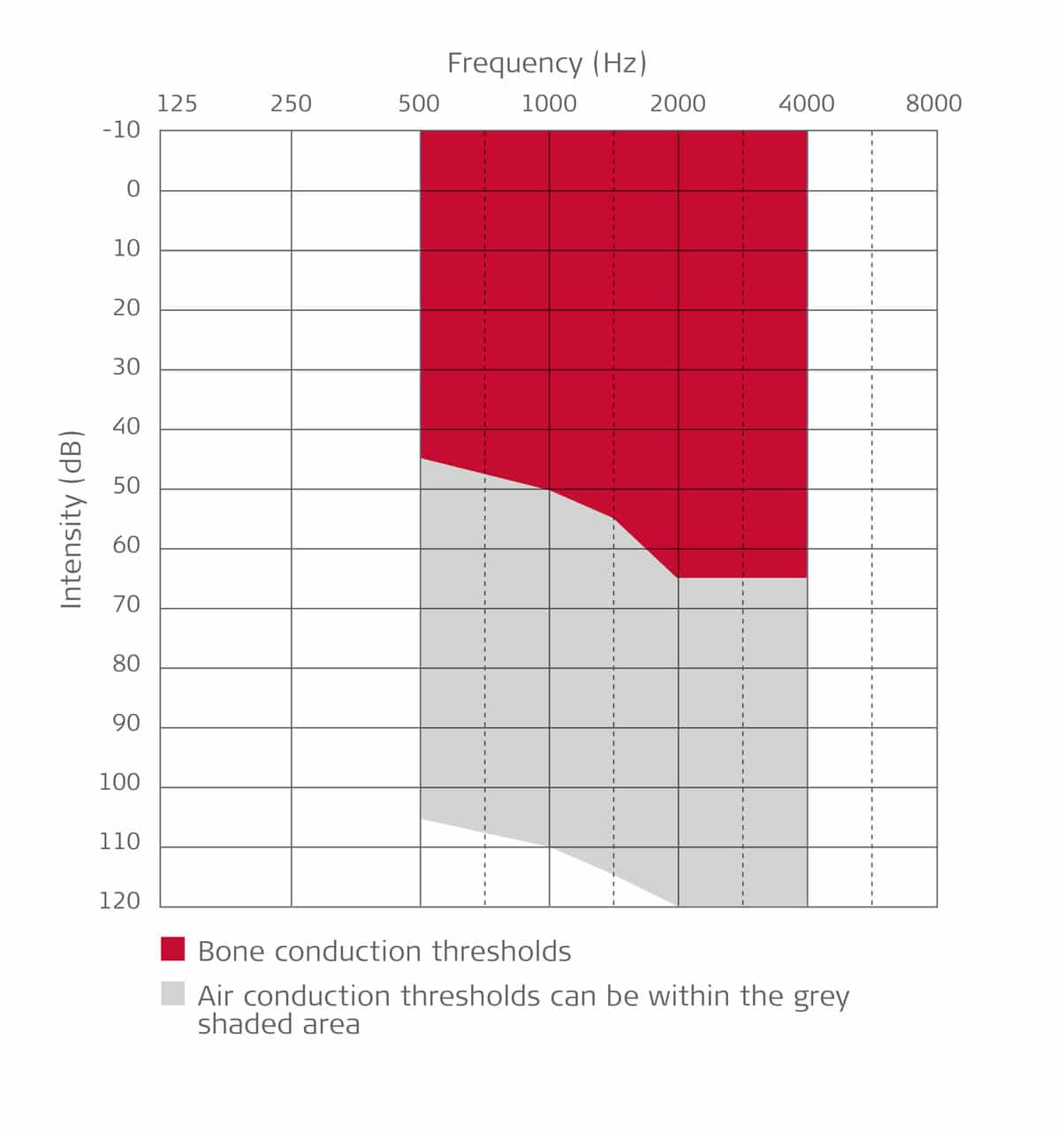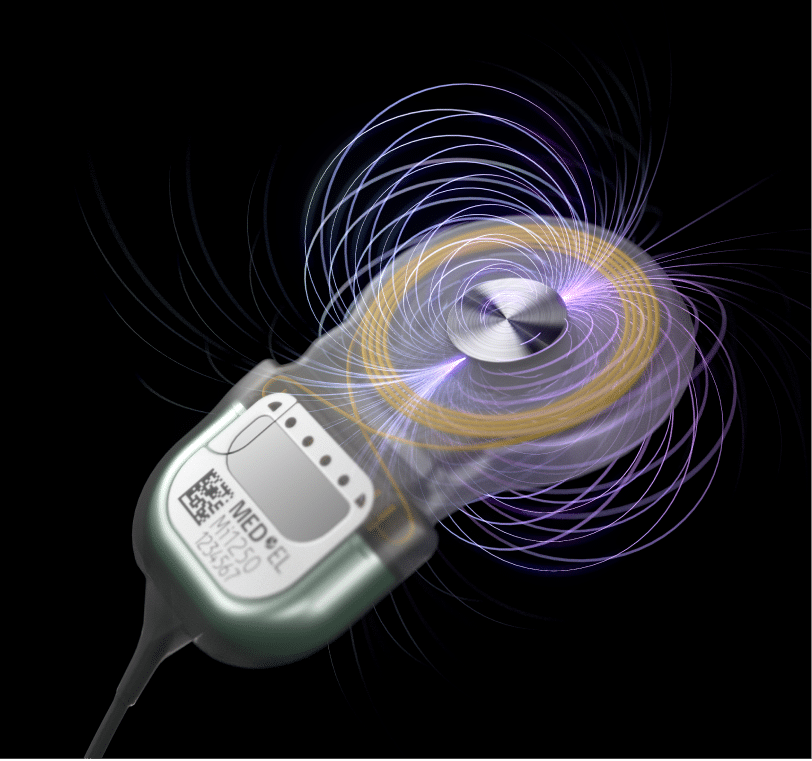

 Transcutaneous transmission leaves skin intact
Transcutaneous transmission leaves skin intact No acoustic feedback
No acoustic feedback Middle ear structures are preserved
Middle ear structures are preserved Natural sound thanks to direct inner ear stimulation through the FMT transducer
Natural sound thanks to direct inner ear stimulation through the FMT transducer Better ventilation and reduced risk of infection by not obstructing the ear canal
Better ventilation and reduced risk of infection by not obstructing the ear canal  Stable audiological results independent of outer or middle ear condition
Stable audiological results independent of outer or middle ear condition 1.5 Tesla MRI without surgery*
1.5 Tesla MRI without surgery* Lightweight, thin, comfortable and discreet to wear
Lightweight, thin, comfortable and discreet to wear 8-10 days of battery life
8-10 days of battery life Easy to use
Easy to use Streaming options
Streaming options Splash-proof or waterproof with cover
Splash-proof or waterproof with cover
*Unless required for diagnostic reasons.

By subscribing to our newsletter, you stay up-to-date on the best practices in hearing implant technology.